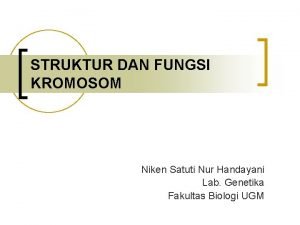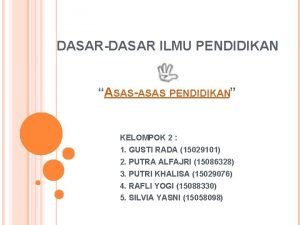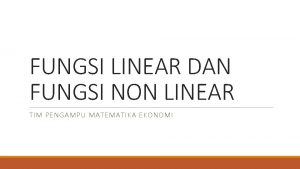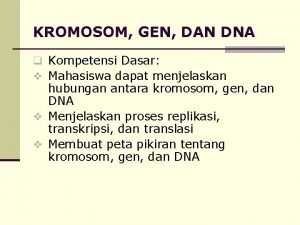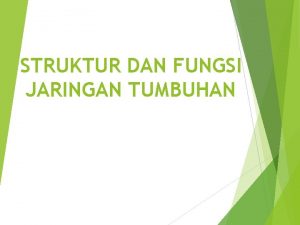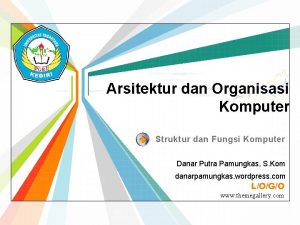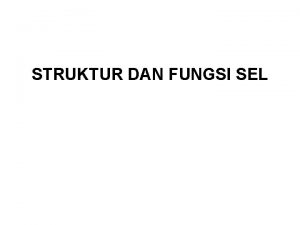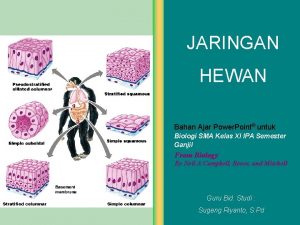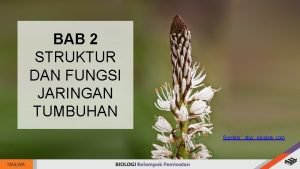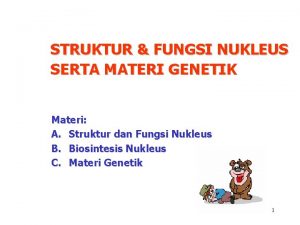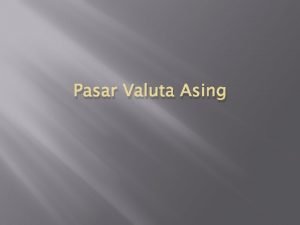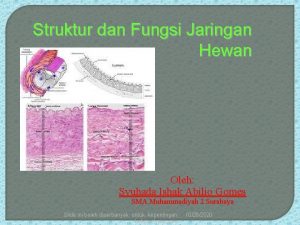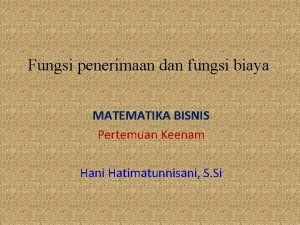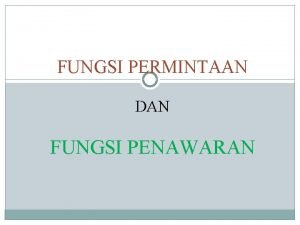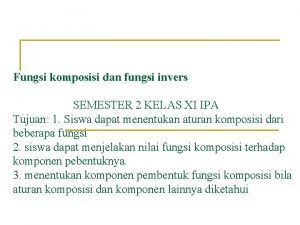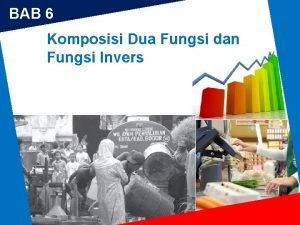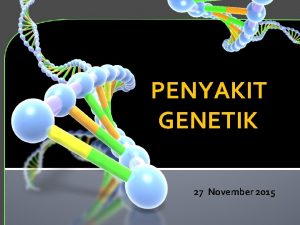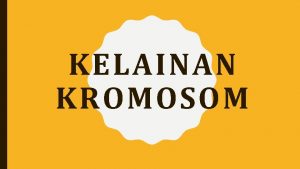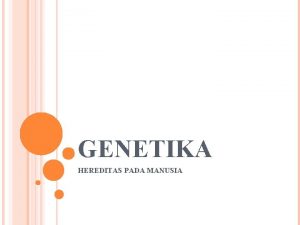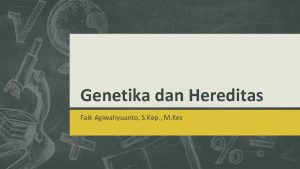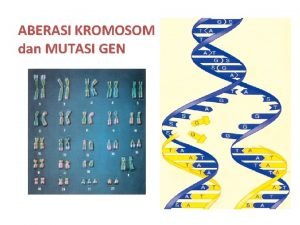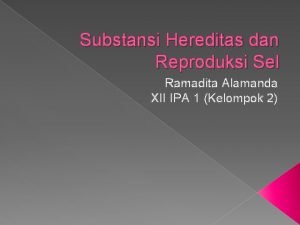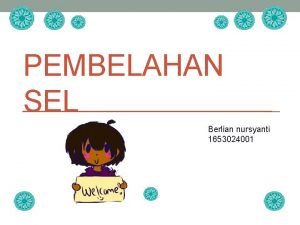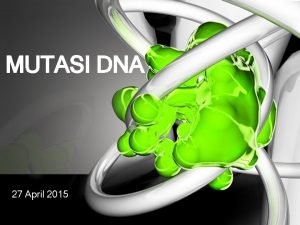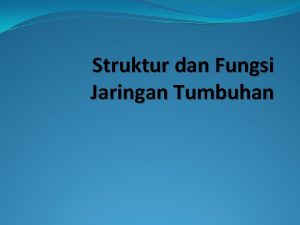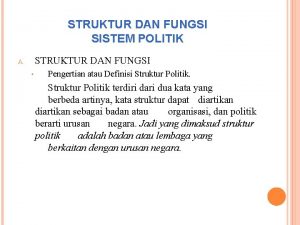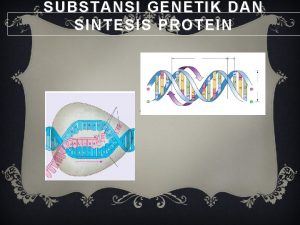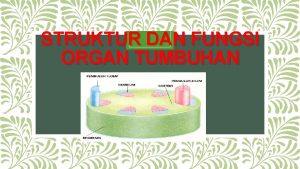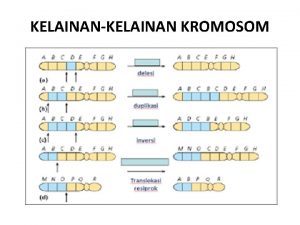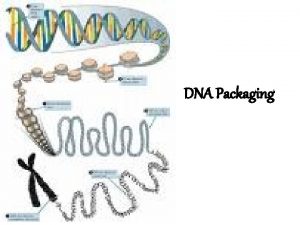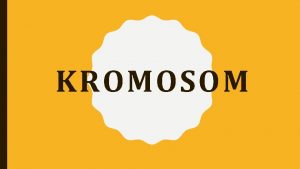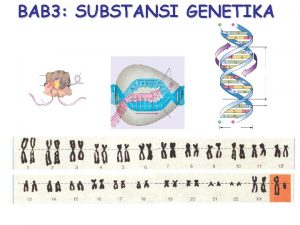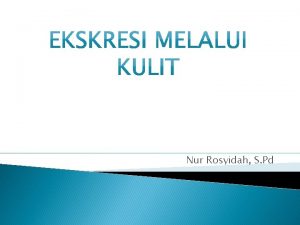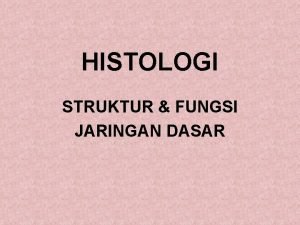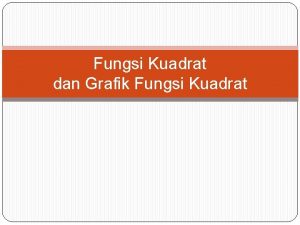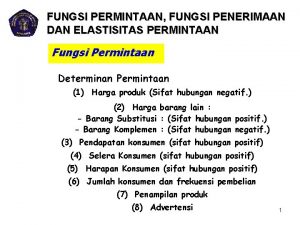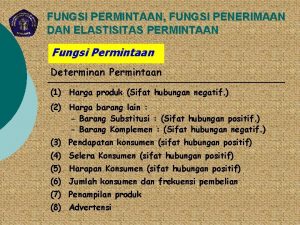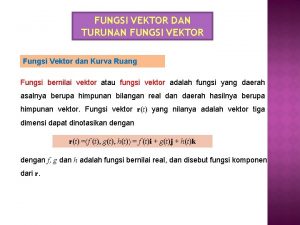STRUKTUR DAN FUNGSI KROMOSOM Niken Satuti Nur Handayani




































- Slides: 36

STRUKTUR DAN FUNGSI KROMOSOM Niken Satuti Nur Handayani Lab. Genetika Fakultas Biologi UGM

Genetics: From Genes to Genomes Second Edition Hartwell ● Hood ● Goldberg ● Reynolds ● Silver ● Veres

The bacterial genome is composed of one circular chromosome n n n 4 -5 Mb long Condenses by supercoiling and looping into a densely packed nucleoid body Chromosomes replicate inside cell and cell divides by binary fission Fig. 14. 4 b

Genetics: From Genes to Genomes Second Edition Hartwell ● Hood ● Goldberg ● Reynolds ● Silver ● Veres

The Eukaryotic Chromosome An Organelle for Packaging and managing DNA

Each chromosome packages a single long molecule of DNA n Chemical and Physical analysis ¡ ¡ Studies examine stretching and recoiling find longer pieces recoil more slowly than shorter pieces Pulse field electrophoresis n Separates large pieces of DNA – number and sizes correspond to number and sizes expected if each chromosome contains a single piece of DNA

Protein components of DNA n Histone proteins abound the chromatin of all eukaryotic cells ¡ ¡ ¡ ¡ Histones – small proteins with basic, positively charged amino acids lysine and arginine Bind to and neutralize negatively charged DNA Make up half of all chromatin protein by weight Five types: H 1, H 2 A, H 2 B, H 3, and H 4 Core histones make up nucleosome: H 2 A, H 2 B, H 3, and H 4 DNA and histone synthesis regulation correlate timing so both are synthesized together High level of similarity of histones among diverse organisms

Protein components of DNA n Nonhistone proteins are a heterogeneous group ¡ Half of proteins in chromatin are nonhistone ¡ Large variety of nonhistone proteins – 200 – 2, 000 in diploid genomes ¡ Large variety of functions n n ¡ Scaffold – backbone of chromosome DNA replications – e. g. , DNA polymerases Chromosome segregation – e. g. , motor proteins of kinetichores Transcriptional regulation – largest group regulates transcription during gene expression Occur in different amounts in different tissues because of variety of function

The nucleosome: the fundamental unit of chromosomal packaging arises from DNAs association with histones n Chromatin fibers with beads having diameter of about 100 A and strings having diameter of 20 A

The nucleosome: the fundamental unit of chromosomal packaging arises from DNAs association with histones n n Bead is a nucleosome with about 160 bp of DNA wrapped twice around a core of 8 histones 40 bp of DNA link together nucleosomes

The nucleosome: the fundamental unit of chromosomal packaging arises from DNAs association with histones n X-ray diffraction analysis ¡ DNA does not coil smoothly ¡ Base sequences dictate preferred nucleosome positions along DNA ¡ Spacing and structure affect genetic function

The nucleosome: the fundamental unit of chromosomal packaging arises from DNAs association with histones n Spacing of nucleosomes affects gene expression ¡ ¡ n Regions between nucleosomes available for interactions with proteins involved in expression, regulation, and further compaction Determines how and whether certain proteins interact with specific sequences Packaging into nucleosomes condenses DNA sevenfold ¡ 2 meters of DNA shortens to less than 0. 25 meters

Models of higher level compaction seek to explain extreme compaction of chromosomes at mitosis n Formation of 300 A fiber through supercoiling

Models of higher level compaction seek to explain extreme compaction of chromosomes at mitosis n Radial loop-scaffold model for higher levels of compaction ¡ Each loop contains 60 -100 kb of DNA tethered by nonhistone scaffold proteins

Radial loop-scaffold model continued

Experimental support for radial loopscaffold model n Electron micrograph shows long DNA loops emanating from the protein scaffold

A closer look at karyotypes: fully compacted metaphase chromosomes have unique, reproducible banding patterns n n Banding patterns are highly reproducible Not known what they represent

A closer look at karyotypes: fully compacted metaphase chromosomes have unique, reproducible banding patterns. n Banding patterns help locate genes

A closer look at karyotypes: fully compacted metaphase chromosomes have unique, reproducible banding patterns n n Banding patterns can be used to analyze chromosomal differences between species Can also be used to reveal cause of genetic disease ¡ e. g. , Downs syndrome – 3 copies of chromosome 21

Centromere structure and function Fig. 12. 11 a

Kromosom Eukaryotik dan Prokaryotik 1. 2. AUTOSOM : kromosom yang tidak ada hubungannya dengan penentuan jenis kelamin KROMOSOM KELAMIN (sex chromosome) : kromosom yang ada hubungannya dengan penentuan jenis kelamin

Chromosome structure HISTONES are proteins with a high proportion of Positively charged amino acids (lysine and arginin), Which enable them to bind firmly to the negatively Charged DNA doble helix. There are 5 types of histone molecules: H 1, H 2 A, H 2 B, H 3, and H 4. Except for H 1, they occur in exactly equal numbers. In less condensed chromatin fibers, it becomes apparent that DNA between nucleosomes is bound to H 1 histones. DNA in metaphase chromosomes must be shortened 10, 000 -fold by very efficient packing. This occurs in discrete units, the NUCLEOSOMES, Consisting of DNA and histones.


Chromosome n n Each chromosome has a constriction point called the centromere, which divides the chromosome into two sections, or arms. The short arm of the chromosome is labeled the p arm. The long arm of the chromosome is labeled the q arm.

Characteristic shapes of chromosomes Short arm Long arm The location of the centromere on each chromosome gives the chromosome its characteristic shape, and can be used to help describe the location of specific genes.

BENTUK KROMOSOM Ada empat bentuk kromosom berdasarkan letak sentromer: 1. 2. TELOSENTRIS : sentromer terletak di terminal (bagian ujung kromosom) AKROSENTRIS/SUB TELOSENTRIS : sentromer terletak di sub terminal (mendekati ujung kromosom) 3. SUB METASENTRIS : sentromer terletak di sub median (mendekati bagian tengah) 4. METASENTRIS : sentromer terletak di median (bagian tengah) 1 2 3 4

Nilai Indeks Sentromer Bentuk kromosom Nilai Indeks Sentromer (NIS) p x 100 p+q p = panjang lengan pendek kromosom q = panjang lengan panjang kromosom p+q = panjang absolut kromosom

Nilai Indeks Sentromer Posisi Sentromer Bentuk Kromosom Simbol Kromosom Rata-rata NIS Median Metasentris m 38 -50 Sub Median Sub Metasentris sm 26 - 37 Sub Terminal Akrosentris / Sub Telosentris st 13 - 25 Terminal Telosentris t 0 - 12

Karyotype n A display of the paired homologues chromosomes from a cell n Allows determination of: sex of an individual, abnormal chromosome number, other chromosome abnormalities, etc.







How many chromosomes do people have? Banding pattern during metaphase Banding pattern during prophase In humans, each cell normally contains 23 pairs of chromosomes, for a total of 46. The 22 autosomes are numbered by size. The other two chromosomes, X and Y, are the sex chromosomes.
 Jelaskan bentuk kromosom berdasarkan letak sentromernya
Jelaskan bentuk kromosom berdasarkan letak sentromernya Asri handayani
Asri handayani Sri hastuti handayani
Sri hastuti handayani Asas tut wuri handayani
Asas tut wuri handayani Fungsi linier dan non linier
Fungsi linier dan non linier Struktur kromosom
Struktur kromosom Jenis buah yang memiliki struktur hespiridium adalah
Jenis buah yang memiliki struktur hespiridium adalah Tentukan fungsi invers dari fungsi fungsi berikut jika ada
Tentukan fungsi invers dari fungsi fungsi berikut jika ada Struktur puisi fisik dan batin
Struktur puisi fisik dan batin Peta konsep struktur tumbuhan
Peta konsep struktur tumbuhan Fungsi acropolis dalam tamadun yunani
Fungsi acropolis dalam tamadun yunani Struktur didalam arsitektur komputer adalah
Struktur didalam arsitektur komputer adalah Struktur dan fungsi dna yang benar adalah
Struktur dan fungsi dna yang benar adalah Ppt jaringan tumbuhan kelas 11
Ppt jaringan tumbuhan kelas 11 Jaringan epidermis
Jaringan epidermis Struktur dan fungsi nukleus
Struktur dan fungsi nukleus Lysosome fungsi
Lysosome fungsi Lysosome
Lysosome Struktur pasar valas
Struktur pasar valas Berfungsi dalam pergerakan adalah ciri-ciri otot
Berfungsi dalam pergerakan adalah ciri-ciri otot Struktur dan fungsi komputer
Struktur dan fungsi komputer Materi fungsi penerimaan
Materi fungsi penerimaan Fungsi demand
Fungsi demand Titik pulang pokok rumus
Titik pulang pokok rumus Jika fungsi a
Jika fungsi a Fungsi komposisi dan fungsi invers
Fungsi komposisi dan fungsi invers Perhatikan gbr
Perhatikan gbr Anoninsia
Anoninsia Tiu aberasi
Tiu aberasi Postulat mendel
Postulat mendel Peta silsilah keluarga ratu victoria
Peta silsilah keluarga ratu victoria Insersi mutasi
Insersi mutasi Interfase
Interfase Inversi perisentris
Inversi perisentris Hemofili
Hemofili Tujuan kromosom menempatkan diri pada bidang metafase
Tujuan kromosom menempatkan diri pada bidang metafase Insersi mutasi
Insersi mutasi
